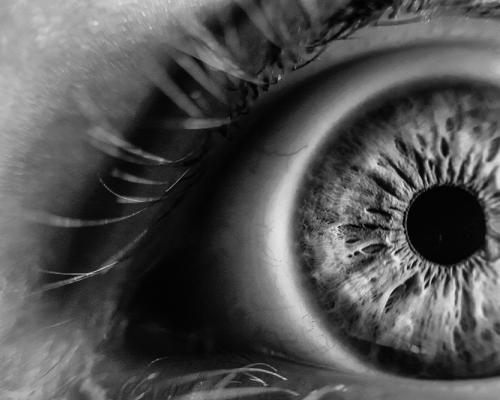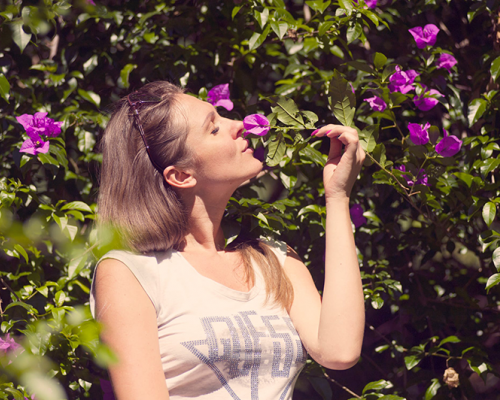When good enough just isn’t enough...
CASE HISTORY
HG Therapist Julia Welstead reflects on a case that made her appreciate how important it is to remain open-minded and to look for the things that bring our clients joy...
As a practising human givens (HG) therapist I have worked with people from all walks of life, all age groups and many different cultures. With any new client there is almost always a time when one has to sit comfortably with uncertainty as to what the problem is and how to help solve it. Indeed I would go so far as to say that if one is not going through a phase of uncertainty and its accompanying openness of mind and ears, then one has possibly fallen into one or all of the traps of complacency, of jumping to conclusions, of relying on pre-conceived assumptions and of applying one’s own culture, conditioning and expectations to the situation.
It is vital to find out the wider context of any difficulties. I once sat through an uncomfortable half hour talk from a drug sales rep as he ran through all the ‘treatments’ available through his company to a group of lunching GPs (buffet provided). By way of example he used the real case of a bus driver with lower back pain. Of course the rep was merely plying his trade, but I was disappointed when none of the GPs’ subsquent discussions made mention of why the patient might be in pain and what else, apart from painkillers, might offer a solution. Sedentary occupation, poor posture, unfit, over-weight, bored, depressed, stressed, low income, shift work, trouble at home, would rather be doing something else, unfulfilled? The possibilities were many, and the context of the pain could and should, surely, help to form a solution beyond merely treating the symptom (the pain)?
Context is key
Context is key but, as with the goldfish in its bowl of stale water, often the client cannot themselves see what’s wrong with their surroundings, and it’s the role of the therapist to enlarge the conversation to the extent that a different perspective can be seen and new insights found.
A few years ago Mary, a midlife professional, sought my help and, because it fitted with her working hours, I visited her in her own home. At every session I was greeted by this wonderfully warm and welcoming woman and presented with a generously prepared table of tea and cakes, and we would spend a good ten minutes ‘passing the time of day’ before getting down to our ‘real’ conversation. This may all sound a bit cosy and unprofessional, but it turned out that seeing her home life was an essential ingredient of knowing who she was, and therefore how to help her.
Mary had a successful career in a large corporate company, but, while she enjoyed her work to an extent, she described herself as “just a number processing numbers”. She was finding life meaningless and, because she lived alone and often worked from home, lamented that she felt sure that “no one would even notice if I vanished”. No amount of Pilates classes, Open University courses or walking groups (as suggested by previous therapists) had made a difference to her loneliness and sense of detachment, and anti-depressants, while giving her a temporary lift, hadn’t been effective for long as they “didn’t address the problem”.
Identifying the ‘problem’
Mary’s difficulty was that she had never quite identified what ‘the problem’ was. In her current life, work was ‘OK’, home life was ‘OK’, family connections were ‘OK’. There was nothing to complain about, everything was good enough, yet she felt that life was just a bit middling and underwhelming, not going anywhere and a bit meaningless. It wasn’t until we looked to Mary’s childhood that the wider perspective could be seen.
Although her family situation had not been ideal (and there were specific issues that we dealt with using the rewind technique), the aspect of her younger life that made Mary positively glow when she spoke of it was the location: the place. Her family were from a small island community to which Mary clearly had a deep sense of belonging, despite not having lived there for any of her adult life. In such small populations (a few hundred) where everyone knows each other, there is usually a strong sense of place, of belonging, of being rooted, and a deep caring for one another, all of which tends to have been eroded in larger more mainstream, more mobile and fluctuating communities. Such community attentiveness is not to everyone’s liking - it can feel intrusive - but for someone who has grown up in its midst, urban living can be a lonesome experience.
It comes as no surprise to hear that someone has moved away from their childhood home of course: that’s perfectly normal and all part of the right of passage into adulthood. Overlay that cultural norm with the specifics - that Mary could not have pursued her chosen further education and career on the island - and her move made sense. And yet, unlike many islanders, several decades later she had never gone back.
The missing ingredient
That’s where the pieces of the jigsaw came together to form Mary’s map of reality, that she could now understand and begin to re-jig to her own liking, for her own future. It became clear that she hadn’t ever gone back because of the historical family issues, which she described as leaving her feeling ‘disempowered’ and as if she was never able to make her own decisions, live her own life.
With these ‘consigned to history’ through our rewind work, Mary almost immediately began to make plans, searching for property and work and logically assessing the feasibility of the move. She was in charge of her own life at last, and she knew what she wanted to do, and where she wanted to be. She had recovered her sense of meaning and zest for life, with all the attendant energy, focus and excitement. The change in her was a joy to behold.
Mary got in touch again recently and commented:
“Do you remember the ‘quiet/safe place’ where I went in my mind while doing the rewind technique – well I am now working 5 minutes away from that very spot. I do feel a great burden was lifted from my shoulders that day, and I agree completely with the human givens ‘theory’, especially as I live it every day I am here.
I have a very different life now, and I feel I am more ‘myself’ if that makes sense – a more genuine ‘Mary’ – and less concerned with (perceived) opinions of others and not feeling the need to conform to other people’s expectations (again perhaps perceived).”
The missing ingredient in a person’s life may be a place, a community and a way of living. Or it might be a person, an activity, a philosophy: it could be anything.
Another client re-discovered his childhood passion for sailing, submerged for many years by the more immediate commitments to raising a family to the extent that he had completely forgotten that he used to enjoy it. And the yearning for a place with peace and quiet and open air may not be a desire to return to one’s roots – far from it. I recently met a young Syrian man who was absolutely delighted with his new life in Iceland, where he had been welcomed into an open-minded and all embracing society. He even liked the climate!
As therapists, it is vital that, as well as looking for signs of distress, we be on the lookout for what makes our client positively glow, and to help them refind and move toward those positives.
© Julia Welstead, July 2018
Latest Tweets:
Tweets by humangivensLatest News:
HG practitioner participates in global congress
HG practitioner Felicity Jaffrey, who lives and works in Egypt, received the extraordinary honour of being invited to speak at Egypt’s hugely prestigious Global Congress on Population, Health and Human Development (PHDC24) in Cairo in October.
SCoPEd - latest update
The six SCoPEd partners have published their latest update on the important work currently underway with regards to the SCoPEd framework implementation, governance and impact assessment.
Date posted: 14/02/2024











